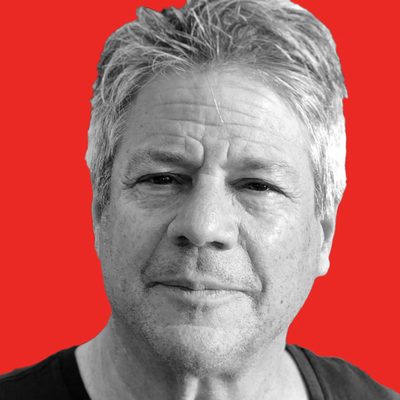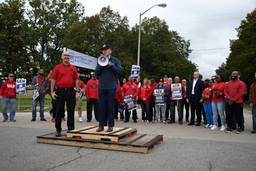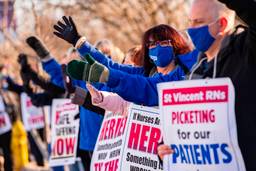
Social justice, peace and union activists gather for two-day ‘Climate of Change’ event
SALT LAKE CITY — Ninety-five years ago, the copper barons and silver mine owners here in Utah conspired with local cops to pin the robbery-murder of a grocery store owner on a quiet, self-effacing Swedish immigrant whose birth name was Joel Emmanuel Hagglund.
If the suspect had been just another career criminal, a foreign vagabond menacing the good citizens of Salt Lake City for nothing more than personal gain, the man known as Joseph Hillstrom and then just plain Joe Hill would be entirely unknown today.
Instead, among local labor, anti-war, and environmental activists, Joe’s gaunt, haunting visage still appears, Che Guevara-style, on T-shirts promoting Utah Jobs with Justice and on buttons commemorating his life and death. In the wider world of labor, everyone knows that the martyred organizer — who instructed his co-workers not to “waste time mourning” after his execution by a firing squad in 1915 — was a talented poet, songwriter, musician and “class war humorist” whose singular devotion to radical labor organizing continues to inspire.
Before he ascended to folk hero status on the left and even in the embattled mainstream of modern unionism, Hill was also just a guy who needed a job. So, in typical immigrant worker fashion, a friend of his from the old country (in this case, a fellow member of the Industrial Workers of the World) got him hired into the machine shop of the Silver King mine.
The rough mining camp where Hill lived is now a place where indy film stars come to preen and play at Robert Redford’s Sundance Film Festival. In Hill’s day, however, Park City was not a glitzy once-a-year cultural hotspot, a host for the Winter Olympics, or a mecca for well-heeled “powder hounds” (who, if they have an eye for labor history, can still find slope-side architectural remnants of the ski area’s industrial past).
A century ago, the foreign-born were on the cutting edge of labor unrest in the mountain states and urban America as well. In Utah, the business-backed nativist backlash and related “red scare” that killed Hill was triggered by immigrant worker militancy linked to radical politics and opposition to imperialist war.
As the late Franklin Rosemount recounts in his authoritative Joe Hill biography (Joe Hill: The IWW & the Making of a Revolutionary Workingclass Counterculture), “Utah copper country had been the site of major IWW struggles for two years before Hill arrived on the scene.” Miners in the Bingham Canyon area were mainly from Greece and they died, by the hundreds, in accidents on the job. Any resulting “union organizing was typically broken up by big strike breaking agencies — veritable armies of gunmen — whose murderous attacks were perpetrated with the full knowledge and often active participation of the state, local government, and police.”
In 1912 at Bingham, the Western Federation of Miners, which included many IWW members and sympathizers, “introduced a new kind of strike to the West.” Instead of walking off the job, 5,000 miners forced management to negotiate by arming themselves and occupying mine facilities.
Activists gather to detail ‘climate of change’
In present day Utah, the closest thing to this might be the impressive mass rally by 4,000 (decidedly unarmed) teachers, firefighters, police officers, and state workers who gathered at the state capitol on Saturday, February 6, to protest draconian pension cuts now being considered by Utah’s conservative state legislators.
The Bee Hive state ranks about 40th in union density and is “open shop” all way. So that gives modern-day bosses and their political allies the upper-hand for sure. But daunting local conditions didn’t stop dedicated activists from Utah Jobs with Justice, and overlapping groups like the Wasatch Coalition for Peace and Justice and the Healthy Planet Mobilization Committee, from holding their third annual joint conference one week later, at the University of Utah. (*See below for full list of sponsors.)
The assembled peace, social justice, environmental, and union activists — plus invited guests — convened this year around the hopeful theme of “A Climate of Change.” They spent February 12-13 listening to speeches, watching political films, and figuring out how to engage more fellow citizens in the problems of global warming, workers’ rights, healthcare reform, and peace in the Middle East.
In a bigger “blue state” beehive of political activity like Boston, all of the single-issues addressed under one tent in Utah would have spawned four of five different left-liberal talk-fests. But none would have the advantage of last weekend’s convergence of overlapping circles of Salt Lake City activism— namely, participants getting exposed to everyone else’s favorite cause.
“Climate of Change” conference organizers kicked things off with a well-attended press conference on Friday night, February 12. This briefing featured climate change experts, local academics, and the former mayor of Salt Lake City, Rocky Anderson. All the speakers took a strong public stand against a resolution adopted by the Utah House of Representatives earlier this month that rejected scientific evidence of global warming, criticized federal efforts to deal with it, and called for the state to abstain from regional collaboration to reduce carbon emissions.
On Saturday morning, we spoke at a workshop on reviving the union movement and building labor-community coalitions. The sixty participants included local union leaders and staffers, rank-and-file activists, students, faculty members, and longtime Salt Lake City progressives. There was a lively exchange on topics like labor-environmental coalitions, based on the emerging Blue Green Alliance model, supported by the United Steelworkers Union.
Present struggles
During the workshop, we also discussed some new opportunities to build Jobs with Justice (JWJ) in Utah. The federal airport security officers (TSOs) at SLC airport are hoping for a change in rules governing the Transportation Security Administration that would make them eligible for bargaining rights that were denied by the Bush Administration. Most of these TSA workers have united in the American Federation of Government Employees. AFGE currently has approximately 12,000 dues-paying TSA members at more than 100 airports in 36 locals nationwide, including Salt Lake. But these federal employee union activists need far more help from local labor organizations and their community allies to gain recognition and then win a first national contract. (Learn more about this here.)
The recent lockout of 540 Rio Tinto miners in Boron, Calif., is another coalition-building opportunity because there is a large Rio Tinto-owned Kennecott mine in the same Bingham Canyon area that was once such a battleground for the IWW and WFM. Today, the miners there belong to the United Steelworkers and their local union is a member of Utah JWJ. There was a strong consensus that JWJ could be very helpful linking the locked-out miners in California with their Kennecott brothers and sisters in Utah (More info here.)
Among the most difficult conditions are those reported by younger activists employed in the state’s burgeoning call-center industry. Utah JWJ organizer Linda Parsons and other activists arranged a meeting after the conference with some workers who are building a network of call center activists. Their appalling “electronic sweat shop” working conditions are the 21st century equivalent to what Hill and many others faced in Utah nearly 100 years ago.
Hill was executed in downtown Salt Lake City to silence a militant and creative voice on behalf of a deeply-exploited immigrant and native-born working class. Now the offspring of the same bosses who killed him are still active in Utah today, trying to take away the same rights that he and others fought and died for. Meanwhile, supporters of Utah JWJ are helping to keep the spirit of Hill — and the accompanying specter of unionization — alive and well, as a counter-balance to unbridled corporate greed.
To listen to an hour-long podcast (originally broadcast by progressive SLC radio station KRCL “Radioactive” program, and hosted by former JWJ intern Lauren Wood) about the problems facing Utah workers, click here.
*Other sponsors included the Campus Committee for Peace and Justice, Utahans for a Just Peace in the Holy Land, The Mormon Worker, the Univ. of Utah’s Office of Sustainability, the Peace and Conflict Studies Program, and the Economics Department. Community sponsors included the Utah Environmental Congress, Peaceful Uprising, Everybody-In, Sustain Utah, the Environmental Ministry of the First Unitarian Church, High Road for Human Rights, the King’s English Bookshop, KRCL Radio, and the SLC Film Center.
Rand Wilson has worked as a union organizer for more than 40 years. An activist in Somerville, Massachusetts, he helps convene a community-labor coalition, Somerville Stands Together and is also a board member for the Job Creation and Retention Trust.








